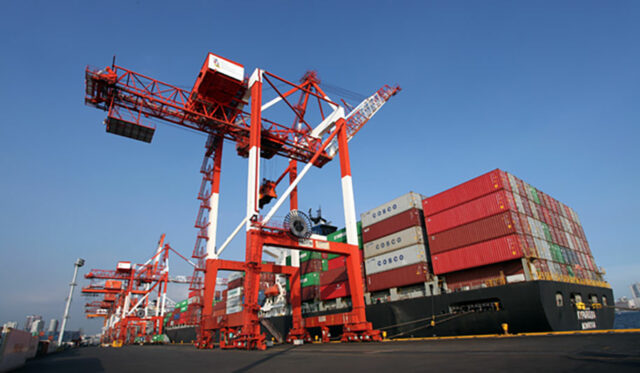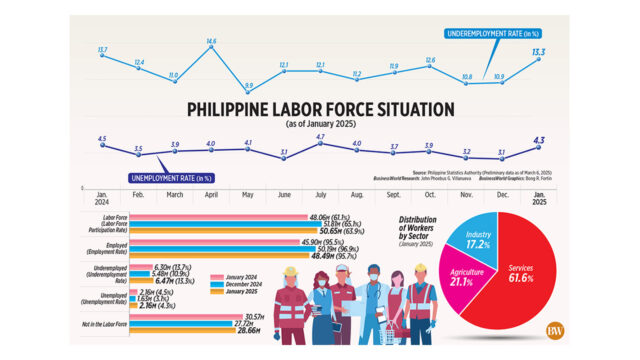Trump deregulation push boosts appeal of bond swap spread wideners
NEW YORK — A potential move by the US Federal Reserve to ease regulations on capital for US banks that would allow them to hold more Treasury securities has unleashed a torrent of so-called swap spread wideners in the bond market.
These are bets that increase demand for US Treasuries that will push their yields lower and closer to those of a competing class of risk-free assets called interest rate swaps. Analysts said this trade has already been successful this year.
The trade has become popular since the Nov. 5 US election on expectations President Donald J. Trump’s administration will push through deregulation, particularly making capital adequacy rules less restrictive for banks.
“Markets have seized on the possibility that looser regulation will free up some capacity for banks to hold more bonds, especially in times of stress,” said Steven Major, the global head of fixed income research at HSBC in Dubai.
“Early positioning from hedge funds was on the view that regulations would be adjusted. There is more to go.”
Swap spreads are a major component of the more than $500-trillion interest rate derivatives market. They express the basis-point difference between the fixed rate of an interest rate swap tied to the current Secured Overnight Financing Rate (SOFR) and the Treasury yield of the same maturity.
Investors and corporations use swaps to hedge interest rate risk or their exposure to US Treasuries, allowing them to exchange fixed-rate cash flows for floating-rate ones, or vice versa.
Swap spreads are currently negative across the curve, meaning yields on Treasuries are higher than those on swaps. But since the beginning of the year, spreads have turned less negative, or in bond market parlance, widened, which means Treasury yields have been trending lower.
US five-year swap spreads have widened since January by about 5 basis points (bps) to minus 29 bps on Tuesday. The spread reflects the difference between five-year Treasury yields currently at 3.925% and five-year swap rates at 3.6201%.
On the long end of the curve, 30-year swap spreads have increased by 8 bps to minus 78 bps.
BALANCE SHEET FLEXIBILITY
Last month, Fed Chair Jerome H. Powell told Congress that it was time for the US central bank to ease the supplementary leverage ratio (SLR), which directs banks to hold capital against investments regardless of their risk and effectively discourages these institutions to hold Treasuries.
The Fed was forced to temporarily waive the SLR after the Treasury market seized up in March 2020, but it let that relief expire a year later.
Cutting SLR would significantly free up additional capacity for banks on their balance sheet, allowing them to add low risk-free assets such as Treasuries without having to allocate capital to cover potential losses.
The net effect of Mr. Powell’s recent comments on the SLR was to push yields lower, consequently widening swap spreads.
Swap spreads across the curve have been negative for years, and this has something to do with the structure of lending between the two risk-free assets.
“The credit risk between Treasury yields and SOFR swap rates is identical,” said Srini Ramaswamy, managing director and head of derivatives strategy at JPMorgan in San Francisco. “Treasury yields are higher and that has something to do with terming out the principal.”
Mr. Ramaswamy cited a five-year SOFR swap rate, for instance, which effectively is the average of rates that one can earn by doing lending in the repurchase or repo market daily for five years. The five-year Treasury note, on the other hand, represents lending money to the US Treasury five years at a time.
“You give up some flexibility when you lend money for five years to the Treasury, so the compensation is higher, as opposed to lending one day at a time in SOFR swaps,” Mr. Ramaswamy said.
And with the recent transition to risk-free SOFR from Libor, or the London Interbank Offered Rate, there is no longer a premium for credit risk embedded in swap rates that lifted them higher over Treasury yields in the past.
Major banks as a result have recommended swap spread wideners to take advantage of looming deregulation.
Barclays, in a research note, recommended swap spread wideners in the belly of the curve, specifically, the seven-year spread, where banks prefer to own Treasuries. It believes a change in the SLR could unlock additional bank demand for Treasuries as these financial institutions grow their assets.
TD Securities, on the other hand, sees more opportunity on the longer end of the curve, particularly in the 30-year sector, where spreads remain historically tight or more negative.
“We believe the widening has more room to run as regulators make progress,” said Gennadiy Goldberg, TD’s head of US rates strategy. — Reuters

















![YEEZY-BOOST-350-V2-[news.adidas.com]](https://www.bworldonline.com/wp-content/uploads/2023/07/YEEZY-BOOST-350-V2-news.adidas.com_-640x407.jpg)

